10 Zero Waste Cleaning Tips
Would you like to clean your home without trashing the planet? We’ve got you covered! Here are our top zero waste cleaning tips to value existing resources & minimize your ecological footprint.
— Permacrafters gets commissions for purchases made through links in this post. We encourage you to prioritize secondhand goods whenever possible. —
Have you noticed that the cleaning products being sold to us by marketers are often unnecessary and single-use? Until just recently, I didn’t know I “needed” a robot vacuum cleaner along with a cute French maid outfit for it, or a self-cleaning oven to save valuable time, or an ultrasonic pest repellent machine to protect my loved-ones from disease. Same goes for my grandparents: there was a time when they didn’t yet know they “needed” single-use wet mopping cloths, dryer sheets, pine-scented disinfecting wipes, disposable pink cleaning gloves, mountain breeze air fresheners, ultra-absorbent paper towels, or colorful detergent pods that look like tasty candy.
Nowadays, we live in a throwaway culture with waste as an end product: resources are extracted, used, and sent to the landfill. Take wet mopping pad cloths, for instance: we use them for 10 minutes, and send them to the dump. Or your pest repellent machine: once it breaks down, it’s cheaper to chuck it in the trash & buy a new one rather than getting it fixed. In nature, though, there is no waste – it’s a cyclical system. Waste is an artifact of human existence that we see in our linear economy. In Permaculture, the Produce No Waste principle asks us to break ourselves out of this culture of obsolescence and consumerism by valuing resources.
In every part of our Conscious Cleaning 101 course, you will see that we put a lot of value in existing resources and in cleaning products that are compostable and won’t contaminate the waterways. Any step to value resources is a step in the right direction! Here are our 10 Zero Waste cleaning tips based on the 5 Rs: Refuse, Reduce, Reuse, Recycle, Rot.
1. Use your existing durable cleaning gear
To clean your home, you don’t need fancy new gear (despite what advertisements may lead us to believe!). Much of our household cleaning gear is actually quite durable, such as brooms, dustpans, vacuum cleaners, extendable dusters, toilet brushes, hampers, drying racks, irons, plungers, augers, hair catchers, pan scrapers, and buckets. Instead of extracting new environmental resources, have a look at the existing durable cleaning gear you may already have in your home, hidden in a closet! You can also attempt to fix any broken cleaning gear yourself or ask around to find a friend or handyman who is willing to fix it for free or for a sensible price. Note that this first zero waste cleaning tip does not apply to reusable microfiber cloths, as they create microplastic pollution in our oceans and tap water.
2. Use durable secondhand items
If you do not have durable cleaning gear at home, look for secondhand items! Have a look at your local thrift store, Craigslist, or the nearest University campus at the end of the school year to see what gear is looking for a new home. You can also ask friends and family for their older gear. Much of these items will last a lifetime, and adopting them saves them from the waste stream. If you’re a Durham local, check out Cristina’s post on the 5 Best Thrift Stores in Durham – our absolute favorite is The Scrap Exchange!
3. Refuse single-use cleaning gear, Switch to reusable gear
Not all zero waste cleaning gear is durable. Sponges & scrub brushes, for instance, need to be replaced regularly. It’s single-use cleaning gear, specifically, that is both unnecessary and wasteful. Here are some easy changes you can make to reduce your waste:
- Refuse wet mopping cloths, switch to a reusable & washable cotton mop
- Refuse dryer sheets, switch to reusable DIY dryer cloths and/or wool dryer balls
- Refuse pine-scented disinfecting wipes, switch to essential oils and old rags
- Refuse disposable cleaning gloves, switch to reusable FSC-certified cleaning gloves
- Refuse mountain breeze air fresheners, switch to pot-pourri, essential oils diffusers, vinegar spray, baking soda or boiling lemons
- Refuse paper towels, switch to cloth rags
4. Repurpose old clothing or household items to craft your own cleaning gear
Instead of sending certain household items or clothing off to the dump, the recycling unit or the compost, perhaps you can find another use for them. 1) Old socks can become small rags to clean nooks & crannies, 2) old cotton T-shirts can be soft rags to clean countertops, 3) an old toothbrush is the perfect scrubbing tool, and 4) an old towel can be used as a mop head! If you have time on your hands, you can also use 5) old stockings to make a tawashi sponge or 6) an old ball of wool yarn to make wool dryer balls or 7) old cotton rags to make dryer sheets. This zero waste cleaning tip is all about being creative to reduce our consumption and avoid the unnecessary extraction of new environmental resources.
5. Reuse cleaning containers (when safe to do so)
In regular US household cleaning products, there are many toxic chemicals that aren’t even required to be listed on labels. If you are making your own DIY cleaning products to protect your health and the environment or to save money, consider reusing cleaning containers such as spray bottles, pump bottles, toilet bowl cleaner bottles, laundry detergent bottles, and dishwasher powder containers. Do NOT reuse containers previously containing dangerous products, however. This includes containers for rodent poison, insecticide, insect repellent, weed killer, drain openers, car cleaners, and oven cleaners. Reusing is a central part of zero waste cleaning & zero waste living in general: always consider what can be reused before purchasing it new.
6. Find the cleaning properties of “waste” materials
Finding value in existing resources also means finding value in materials that would commonly be considered “waste”. Used coffee grounds, for instance, can deodorize your fridge or be used for their abrasive and absorptive qualities to clean pots and pans. Kombucha that’s turned to vinegar can be used to disinfect surfaces. Lemons that are past their prime can be used to fight limescale, to whiten or remove stains from clothing, to deodorize or to clean copper. Wrinkled potatoes can be used to fight rust and decalcify water boilers. Hardwood ash from your fire pit can be used to make laundry detergent. And even banana skins may be able to buff leather shoes! This is why “rot” is the last of the 5 zero waste Rs: first consider how any product may be reused prior to sending it to the compost!
7. Select compostable products
Choose cleaning products that won’t pollute the waterways and that are compostable. Soap nuts and other saponin-rich plants, such as English ivy and horse chestnuts, are laundry detergent alternatives that can be composted after use. Other plant-based cleaning products like cornstarch, vinegar, salt, and coffee grounds are easily compostable and toxic-free. This zero waste cleaning tip is key to mimicking the cyclical system of nature: when “waste” cleaning products are composted, they are turned back into a rich resource to grow our food.
8. Choose package-free ingredients
The ideal option for all your cleaning ingredients and cleaning gear would of course be to have them free of any sort of packaging. Some of the ingredient options I’ve shared are package-free already, like English ivy, wood ash, used coffee grounds, and (hopefully) lemons as well. With other products, it may be trickier to find them package-free. When buying your vinegar, your baking soda, washing soda, citric acid or cornstarch, the perfect scenario would be to buy them in bulk. If you have a zero waste bulk store near you, that would be the absolute best option: bring your refillable jars and bottles and purchase as much of the product as you like.
9. Recycle packaging (opt for glass first, then paper, plastic last!)
If your cleaning products come in packaging, try to choose packaging options that are recyclable so that the materials can be reused. Glass can be recycled indefinitely and doesn’t lose its quality over time, so it’s one of the best materials to recycle. It also doesn’t leech out dangerous substances or harm marine wildlife (as least to the extent that plastic does). Paper/cardboard can be recycled about 5 times, and can then be composted at the end of its lifecycle (of course, this doesn’t apply to all types of paper, like glossy paper or paper that contains toxic ink). Plastic can also be recycled, but not all types of plastic (also depends on your location), and not indefinitely. And once it can no longer be recycled, it can take longer than our lifetime to disintegrate (450 years for a plastic bottle). Recycling is wonderful and necessary, but it should be a last resort, because not a harmless process. It does require energy, chemicals, and water to recycle. (Still less overall than reproducing the material being recycled.)
10. Don’t be too hard on yourself
The more privileges we have, whether it’s time, money, education, health, location, community, the easier it will be to make choices that create less waste. You may live in an area that doesn’t have as many of these zero waste cleaning options. You may not have time to make your DIY zero waste cleaning gear or products. You may not have all the information you need to make the best choices for the environment or for your health. No matter your situation, you still have the power to make better decisions that create an impact on your life and on the world around you. Make the best decision you can based on your situation, be proud of your changes, and don’t be too hard on yourself.
3-Day Green Cleaning Challenge

Join our FREE 3 day green cleaning challenge to make your own DIY products. Start your journey to a healthier home & planet!
If you want to learn more about zero waste cleaning and safe cleaning recipes that are not harmful to your health, check out our Conscious Cleaning 101 online workshop! You can have immediate access to our workbook, video tutorials, and more!
Will you be trying out these zero waste cleaning tips? Are there zero waste cleaning tips you use that you’d like to share with us? If so, please comment below!
xxx,
Christelle
By commenting you accept our Privacy Policy.
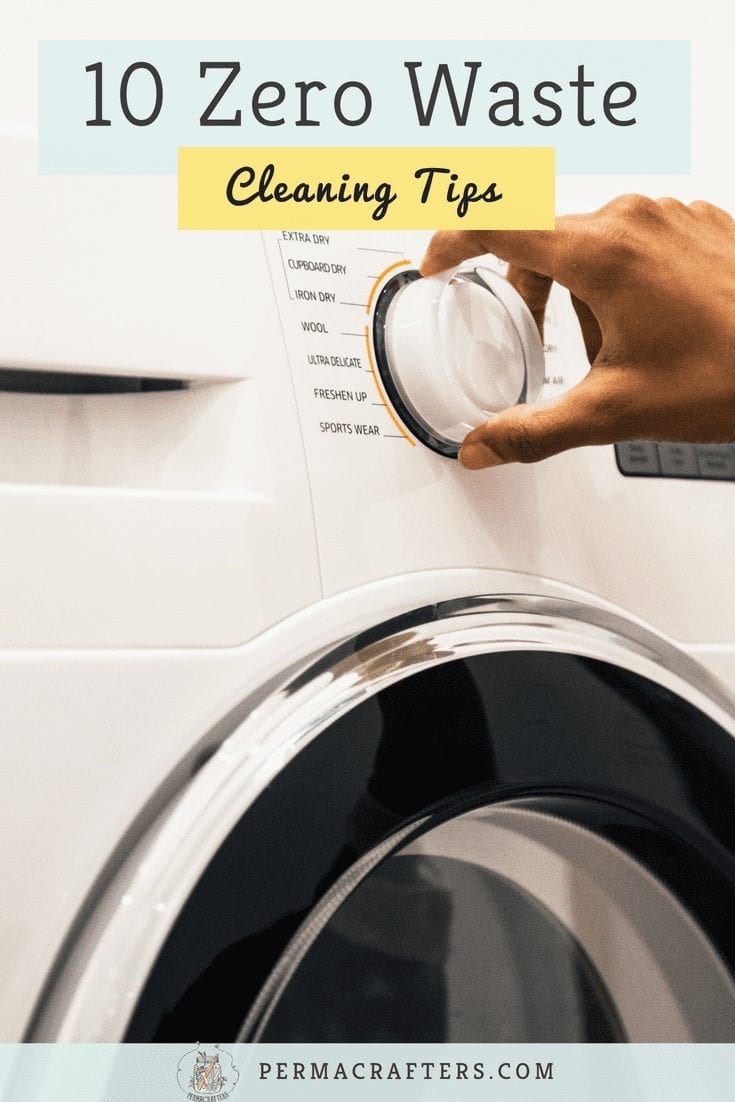
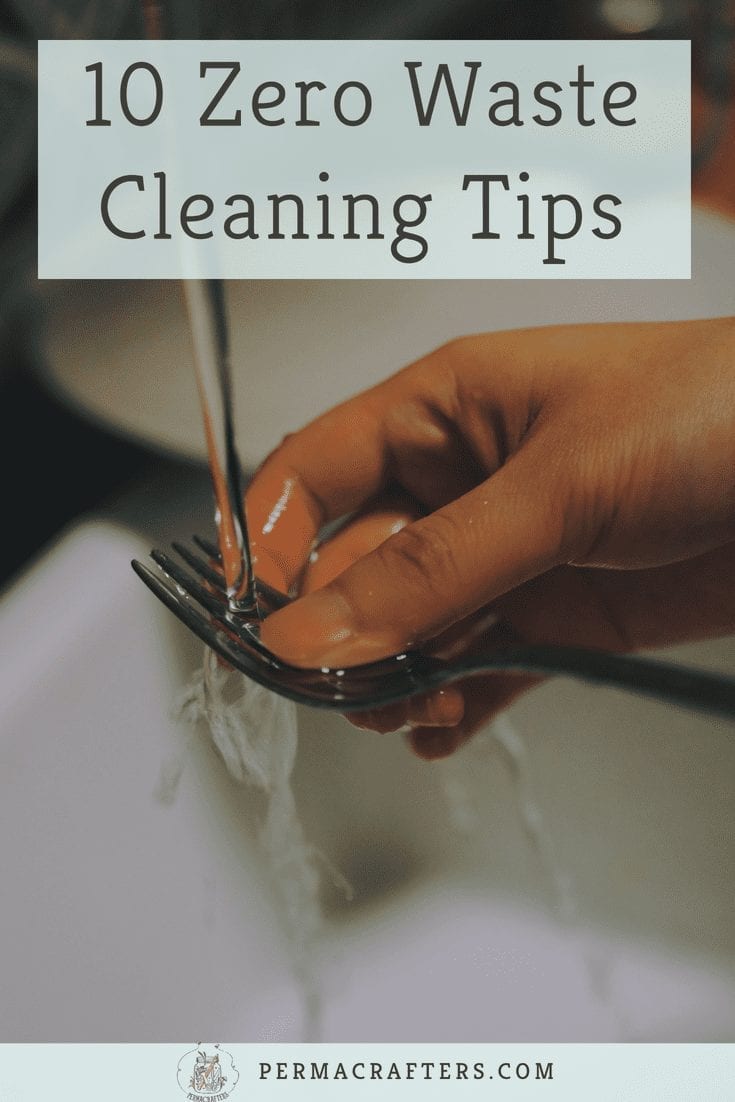
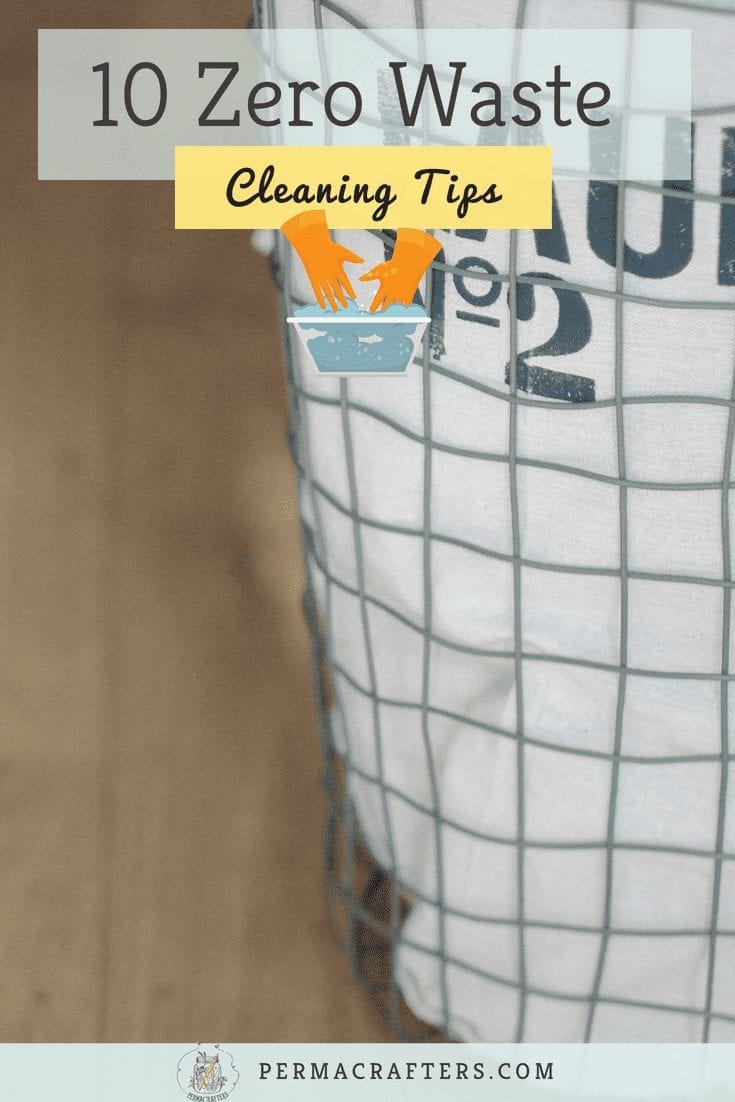
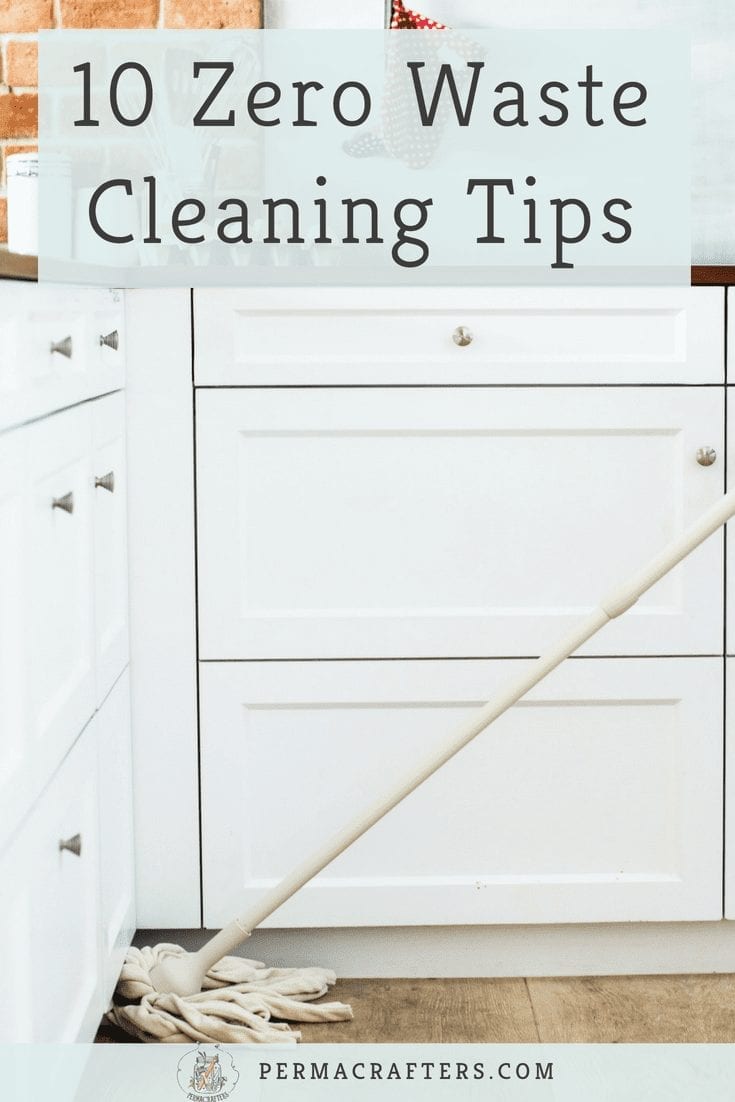
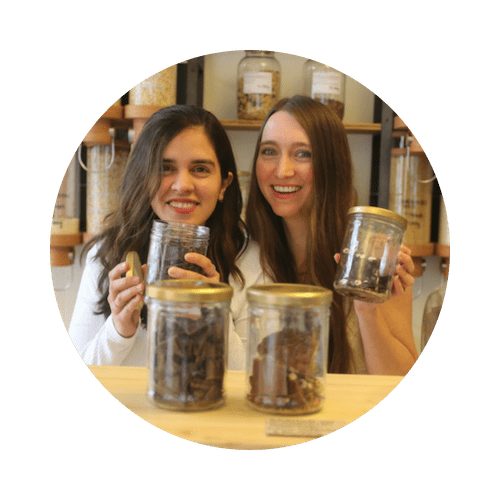
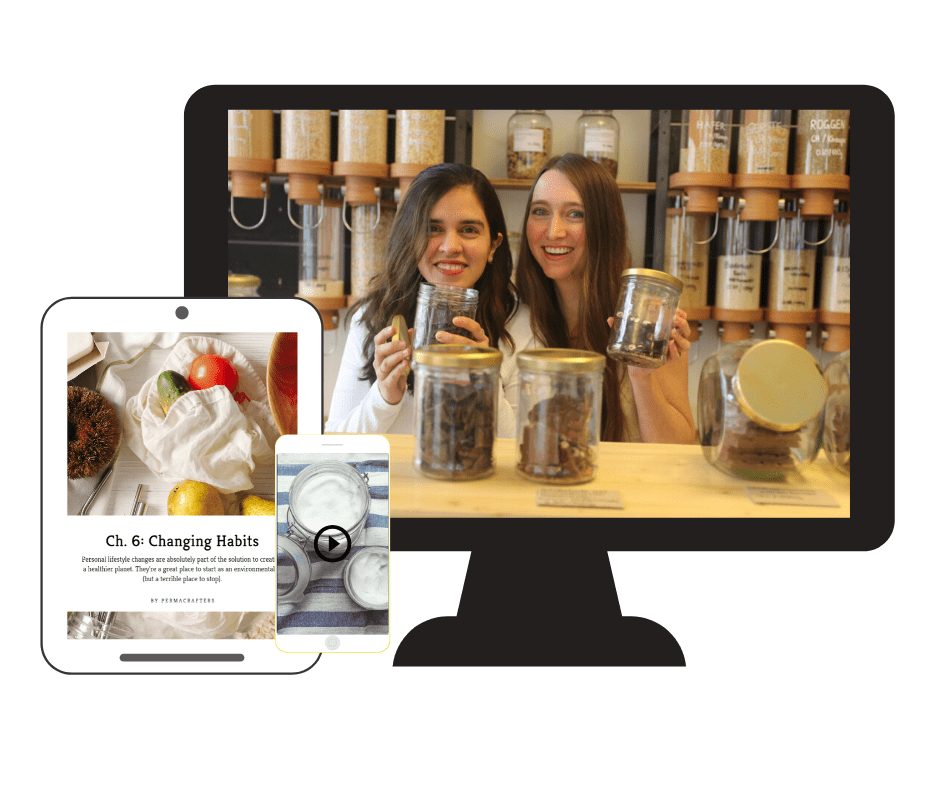
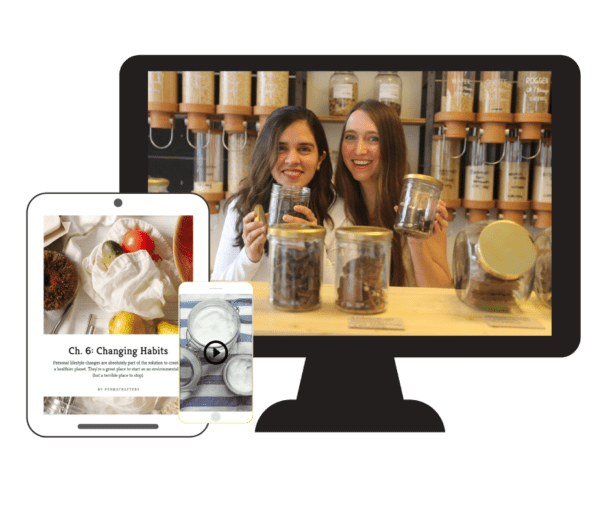
Hey Christelle,
that’s a wonderful article … I think definitely the hardest part sometimes is to find the time to prepare the DIY cleaning gear for me. Since the next possibilities to buy some environment-friendly products are too far away to get there in a few minutes, I try to produce as much on my own as possible.
But maybe I’m getting faster with time. So I think your tip number 10 is the one that suits me the most right know. Thank you very much 🙂
Hi Dennis! Yes it can for sure be a learning curve to make your DIY cleaning products. I find the best way for me is to make my products in bulk so that I only have to worry about it every year or so. Glad you enjoyed the post and yes, be kind to yourself! 🙂 You can check out our free cleaning challenge or even our cleaning course if you’d like, on our courses page. xx